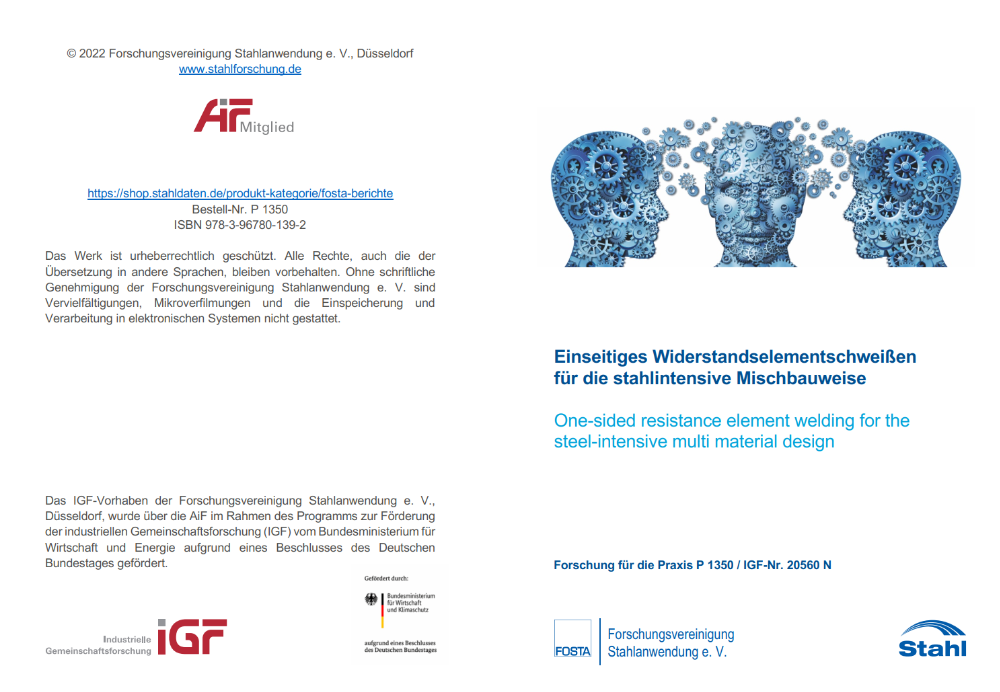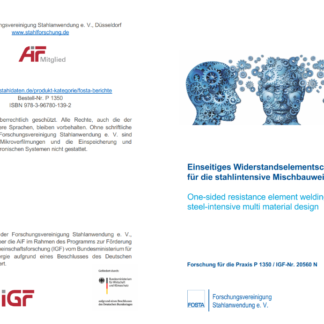Description
P 1350 – One-sided resistance element welding for the steel-intensive multi material design
Against the backdrop of dwindling resources and the achievement of climate policy targets for reducing CO2 emissions by means of statutory requirements, vehicle manufacturers are striving to significantly reduce the fuel and energy consumption of their new vehicles despite increasing customer demands for safety, comfort, quality and durability. In many cases, the vehicle body has the greatest potential for weight savings. The means of reducing weight can include both material selection and design measures. The use of ultra-high-strength steels or press-hardened steels in body-inwhite construction has increased steadily in recent years. Due to their high strength, ultra-high-strength steels in particular allow the use of thinner sheet thicknesses and thus contribute to weight reduction. In addition to conventional automotive sheet-metal shell construction with ultrahigh-strength steel grades, there is also the concept of formed lightweight construction with hollow sections made from hot-formable steels with high torsional stiffness. In this type of body construction, the joining technology must ensure sufficiently high joint strength with one-sided accessibility to the joint. Due to its high cost-effectiveness, resistance welding is a very widespread joining technique, especially among SMEs from the sheet metal and profile processing sectors.
The research project dealt with the investigation and qualification of resistance element welding (REW) with one-sided accessibility to the joint. In a numerical and experimental analysis of the one-sided welding process, the resulting joints were investigated with regard to their properties and the process limits were determined. For this purpose, the process fundamentals were worked out in such a way that the one-sided joining process and the mechanical and technological properties of the joints were characterized. The development and optimization of the required equipment technology and auxiliary joining elements as well as the determination of significant influencing factors and optimum process parameters enable the user to fully exploit the potentials of single-sided resistance element welding.
The implementation of the results obtained marks an important contribution to the further development of REW and the economical production of future steel-intensive lightweight structures with only one-sided accessibility to the joining point, such as profile construction in multi-material design.
All research reports in german language only!
Published in:
July 2022
Authors:
Univ.-Prof. Dr.-Ing. U. Reisgen, Dr.-Ing. A. Schiebahn, M.Sc. M. Epperlein, Prof. Dr.-Ing. G. Meschut, M.Sc. V. Haak


